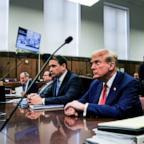It Seemed So Out of Place
Oct. 14, 2005 — -- A student with blond dreadlocks was playing an acoustic guitar outside of the Scott Chemistry building as I walked in looking for the Reed Research Reactor. He didn't seem at all out of place. I had passed a couple of students playing fetch with a dog and a young man in a kilt on my way to the large brick building in the middle of campus. In fact, the only thing that did seem out of place was the fact that there was a nuclear reactor in the middle of this Portland, Ore., liberal arts college.
After two weeks of visiting reactors at large universities in the Northwest, Reed seemed an unlikely place for a nuclear research facility. All of the other schools I visited were public universities with 13,000 to 30,000 students. Reed is a private, undergraduate institution with 1,300 students.
Most research reactors at U.S. universities were built with the help of federal funds during the 1950s and 1960s as part of President Eisenhower's push to harness the peaceful power of the atom. Reed, however, procured its own reactor. According to the school's Web site, chemistry professor Arthur F. Scott privately raised the $300,000 needed to build the reactor in 1968. The school has never had a nuclear engineering program.
Three of the other schools my colleagues and I visited, Washington State, University of Arizona and Worcester Polytechnic Institute, offer no nuclear engineering courses. Some other universities with reactors have gotten rid of their nuclear engineering majors, but still offer courses within their engineering departments.
When I was in the control room of Washington State's reactor, a supervisor told me his facility, which uses highly enriched uranium, was not affiliated with any academic department on campus. "That kind of freedom," he told me, "is pretty unusual in the academic world."
The reactor at Washington State spends most of its operating hours irradiating samples for commercial customers, not students or researchers, said Dr. Gerald Tripard, director of the Nuclear Radiation Center. These endeavors are referred to as "service applications" at the reactors, as universities are not supposed to be commercial operations. Tripard said that, while the commercial projects may take more time, the reactor is used for a greater number of research projects.




